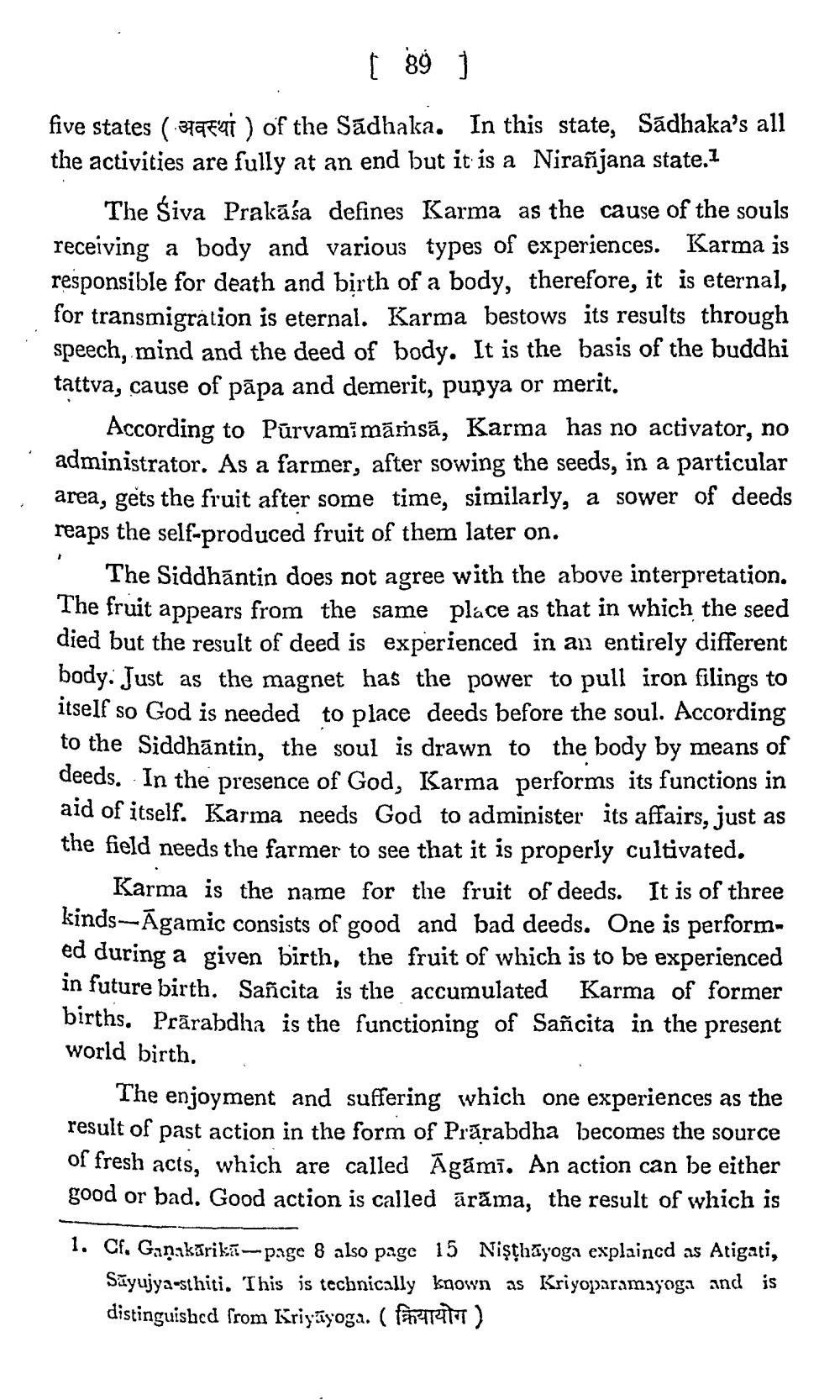________________
( 8 ) five states (34AF91) of the Sadhaka. In this state, Sadhaka's all the activities are fully at an end but it is a Niranjana state. I
The Śiva Prakāśa defines Karma as the cause of the souls receiving a body and various types of experiences. Karma is responsible for death and birth of a body, therefore, it is eternal, for transmigration is eternal. Karma bestows its results through speech, mind and the deed of body. It is the basis of the buddhi tattva, cause of pāpa and demerit, punya or merit.
According to Pūrvamīmāṁsā, Karma has no activator, no administrator. As a farmer, after sowing the seeds, in a particular area, gets the fruit after some time, similarly, a sower of deeds reaps the self-produced fruit of them later on.
The Siddhāntin does not agree with the above interpretation. The fruit appears from the same place as that in which the seed died but the result of deed is experienced in an entirely different body. Just as the magnet has the power to pull iron filings to itself so God is needed to place deeds before the soul. According to the Siddhāntin, the soul is drawn to the body by means of deeds. In the presence of God, Karma performs its functions in aid of itself. Karma needs God to administer its affairs, just as the field needs the farmer to see that it is properly cultivated.
Karma is the name for the fruit of deeds. It is of three kinds-Āgamic consists of good and bad deeds. One is performed during a given birth, the fruit of which is to be experienced in future birth. Sañcita is the accumulated Karma of former births. Prārahdha is the functioning of Sañcita in the present world birth.
The enjoyment and suffering which one experiences as the result of past action in the form of Prārabdha becomes the source of fresh acts, which are called Āgámi. An action can be either good or bad. Good action is called ārāma, the result of which is 1. Cf. Gaņakarika-page 8 also page 15 Nişthāyoga explaincd as Atigati,
Sãyujya-sthiti. This is technically known as Kriyoparamayoga and is distinguished from Kriyayoga. ( P RATT)




